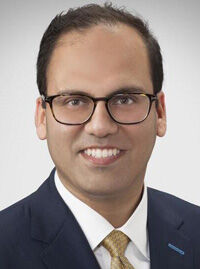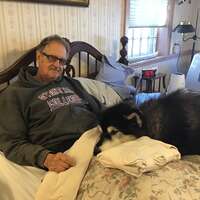Surgeon Q&A: Tests & Timing Bicuspid Aortic Valve & Aneurysm Surgery
Written By: Andrea Wickstrom, BSN, RN, PHN
Medical Expert: Ibrahim Sultan, MD, Chief, Division of Cardiac Surgery, Department of Cardiothoracic Surgery, University of Pittsburgh Medical Center (UPMC)
Reviewed By: Adam Pick, Patient Advocate
Published: August 9, 2023
We just received a great question from Brad about bicuspid aortic valve disease and aneurysms. Brad asks, “I have been unexpectedly diagnosed with a bicuspid aortic valve and an aneurysm. My doctor told me I will probably need surgery in the next few years but was vague about when that would be. As you might imagine, I’m a little stressed out and worrying about the future. Are there any specific test results that will tell me when I should have surgery?”
To provide Brad an expert response, we met with Dr. Ibrahim Sultan at The American Association for Thoracic Surgery Conference. Dr. Sultan is the Chief of the Division of Cardiac Surgery, Department of Cardiothoracic Surgery at the University of Pittsburgh Medical Center (UPMC), where he has performed over 1,500 cardiac surgeries. Dr. Sultan is board-certified by the American Board of Surgery and the American Board of Thoracic Surgery.
Key Learnings About Bicuspid Aortic Valves and Aortic Aneurysms
Here are key insights shared by Dr. Sultan during our interview:
- Bicuspid aortic valves (BAVs) are common, affecting approximately 2% of the population. A person with a BAV is more prone to develop an aortic aneurysm. The aorta is the main artery that leaves the heart and branches off to the head, trunk, and extremities. An aneurysm is a balloon-like bulge of an artery (also called a blood vessel).
- “Aortic Aneurysms tend to grow faster in combination with a bicuspid aortic valve,” Dr. Sultan explained, “What we know is if you have a bicuspid aortic valve and an aortic aneurysm, we know that those aneurysms tend to grow at a faster rate than the rest of the population.” The surgical team considers the level of valve dysfunction and the size of the aneurysm to determine when it is time for surgery.
- Some tests can help determine surgery timing. “Recommended surgery for you would be either if your bicuspid aortic valve were to fail with leaking or by being tight, or your aneurysm were to get to a certain size such as five centimeters, which is now the recommended size for needing surgery,” Dr. Sultan added.
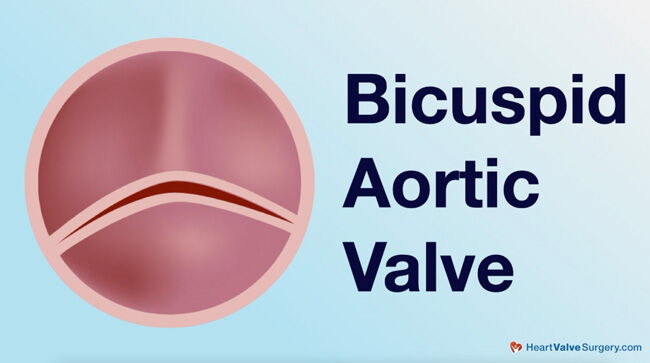
Various tests will allow your surgical team to determine the right time for intervention of a BAV and aortic aneurysm. Common tests include:
- An echocardiogram (echo) that uses live ultrasound images to view and measure the structure and function of the heart, including the condition of the aortic valve. The test usually does not cause pain, though some patients may feel additional pressure on the chest from the probe. Sometimes an IV is placed in the arm to inject an image enhancer to visualize the heart better.
- A transesophageal echocardiogram (TEE) can see the heart’s structures in more detail by placing the ultrasound probe in the esophagus while the patient is sedated.
- A CAT scan (or CT scan) uses X-ray and computer technology to create detailed cross-sectional images of structures inside the body. It can provide accurate information about an aneurysm’s size and other valuable information.
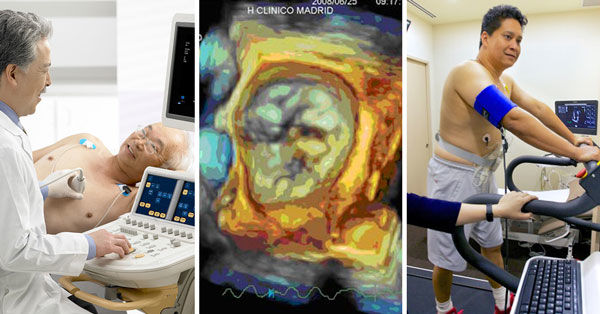
We thought Brad may be wondering, so we followed up with a second question about treatment. Dr. Sultan laid out some of the surgical options:
- Surgical options may include open heart or minimally invasive cardiac surgery (MICS). Dr. Sultan continued, “The majority of the time, your aneurysm will need to be replaced with a woven polyester graft. Your heart valve may need to be repaired or replaced. If it’s leaky, most of the time, it can be repaired using your own tissue. If it’s tight or stenosed, it’ll likely have to be replaced with a prosthetic aortic valve or an artificial heart valve.”
- Sometimes the surgeon can perform a valve-sparing procedure, meaning the native (or the patient’s original valve) can be repaired instead of replaced. Dr. Sultan said, “If you have an aortic valve or bicuspid aortic valve that has excess leaflet tissue and is leaky, it can be repaired using your own tissue. If it’s very tight and you don’t have enough leaflet tissue that’s healthy or can be repaired, and it’s primarily failing because your valve has calcium on it or is tight, it typically needs to be replaced.”
- The University of Pittsburgh Medical Center (UPMC) is one of the leading centers performing valve-sparing root replacement surgeries in patients with bicuspid aortic valves.
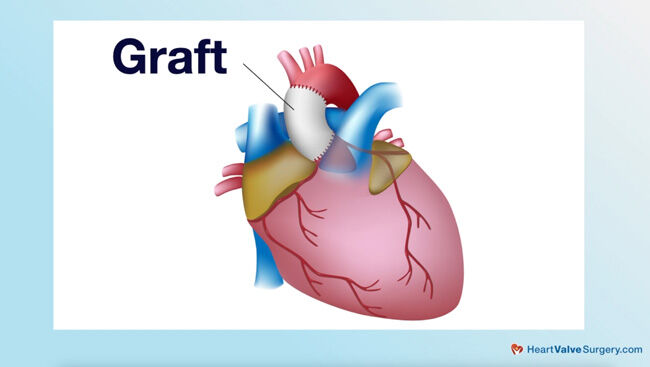
Thanks Dr. Sultan and UPMC!
On behalf of our patient community, many thanks to Dr. Ibrahim Sultan for sharing his clinical knowledge and experience of timing bicuspid aortic valve and aortic aneurysm surgery! We would also like to show our gratitude to UPMC for taking great care of patients undergoing this surgery!
Related links:
- About Dr. Ibrahim Sultan, Heart Surgeon
- Doctor Q&A: Biological Heart Valve Durability with Dr. Ibrahim Sultan
Keep on tickin!
Adam
P.S. For the deaf and hard of hearing members of our community, I have provided a written transcript of this interview below.
Video Transcript:
Adam Pick: Hi, everybody, it’s Adam with heartvalvesurgery.com, and we are at the American Association for Thoracic Surgery Conference in Los Angeles. I’m thrilled to be joined by Dr. Ibrahim Sultan who’s a leading cardiac surgeon at UPMC in Pittsburgh, Pennsylvania. Dr. Sultan, thanks so much for being with me today.
Dr. Sultan: Great, thank you for having me, Adam.
Adam Pick: Yeah, so there’s a lot of great presentations. There’s even some debates going on here. We want to answer, though, a patient question that came in just a few minutes ago. This one’s from Brad. He asked, “I have been unexpectedly diagnosed with bicuspid aortic vale and an aneurysm. My doctor told me I will probably need surgery in the next few years but was vague about when that would be. As you might imagine, I’m a little stressed out and worrying about the future. Are there any specific test results that will tell me when I should have surgery?”
Dr. Sultan: No, that’s a very insightful and great question, Brad. Here’s what I would say: first of all, bicuspid aortic valves are very common, as you may know. About 2% of the population has it. What we also know is once you have a bicuspid aortic valve, you’re also likely to have an aortic aneurysm. Third point, what we know is if you have a bicuspid aortic valve and an aortic aneurysm, we know that those aneurysms tend to grow at a faster rate than the rest of the population. What that means is your surgeon or doctor may be correct, which is you will likely need surgery down the line.
The timing is variable. The reason to operate on you, Brad, or recommend surgery to you would be either if your bicuspid aortic valve were to fail with leaking or by being tight, or your aneurysm were to get to a certain size such as 5 centimeter, which is now the recommended size for needing surgery. The important aspect of this is both of these should be looked at appropriately, meaning at valve failure using an echocardiogram that’s reliable and can be replicated, and a CAT scan, which is what we call a gated CAT scan that times your aorta and it’s mapping with your heart rate. That gives you a precise and accurate measurement of how big your aneurysm is.
Adam Pick: Now I’ve got to ask you a follow-up because I imagine Brad might be wondering what are my treatment options. There’s a lot of different approaches. What are your thoughts for the different treatment options that might be available to Brad?
Dr. Sultan: So depending on your age, the most common way that most surgeons would recommend would be surgery. That can be with a sternotomy or minimally invasive approach. Majority of the times, your aneurysm will need to be replaced with a woven polyester graft. Your heart valve may need to be repaired or replaced. If it’s leaky, most of the times, it can be repaired using your own tissue. If it’s tight or stenosed, it’ll likely have to be replaced with a prosthetic aortic valve or an artificial heart valve.
Adam Pick: That’s fantastic, and I’ve got to ask. There’s one other procedure we’ve been hearing lots and lots about, keeping the patients’ native valve if possible, called maybe it’s valve-sparing procedure. Is that something that you’re doing at UPMC?
Dr. Sultan: Absolutely. So we are one of the leading centers in doing valve-sparing root replacement in patients with bicuspid aortic valves. What we know and the way I talk to patients about this is at least in my way, in my mind, simple, which is it’s kind of like going to a a tailor with a pair of pants. If you have a pair of pants that are too long, those can be hemmed, meaning if you have an aortic valve or bicuspid aortic valve that has excess leaflet tissue and is leaky, it can be repaired using your own tissue. That is always Plan A, B, and C. If it’s very tight and you don’t have enough leaflet tissue that’s healthy or can be repaired and it’s primarily failing because your valve has calcium on it or is tight, it typically needs to be replaced.
Adam Pick: Well, Brad, I hope that helped you; I know it helped me. Dr. Sultan, on behalf of all the patients at heartvalvesurgery.com, patients all over the world, thanks for everything you’re doing at UPMC in Pittsburgh, Pennsylvania. Thanks so much for being with me today.
